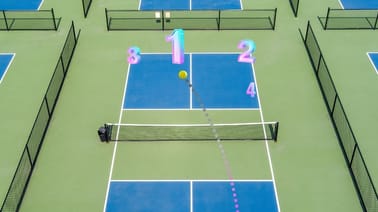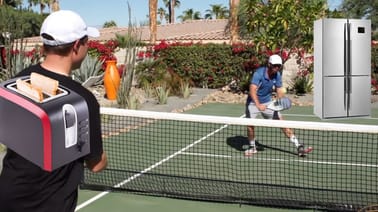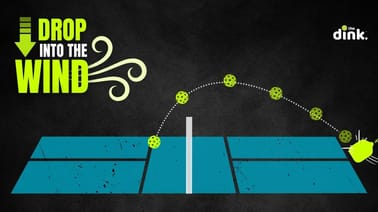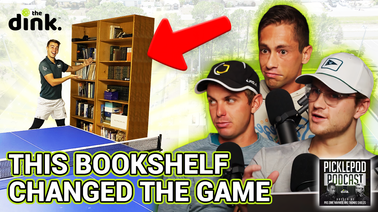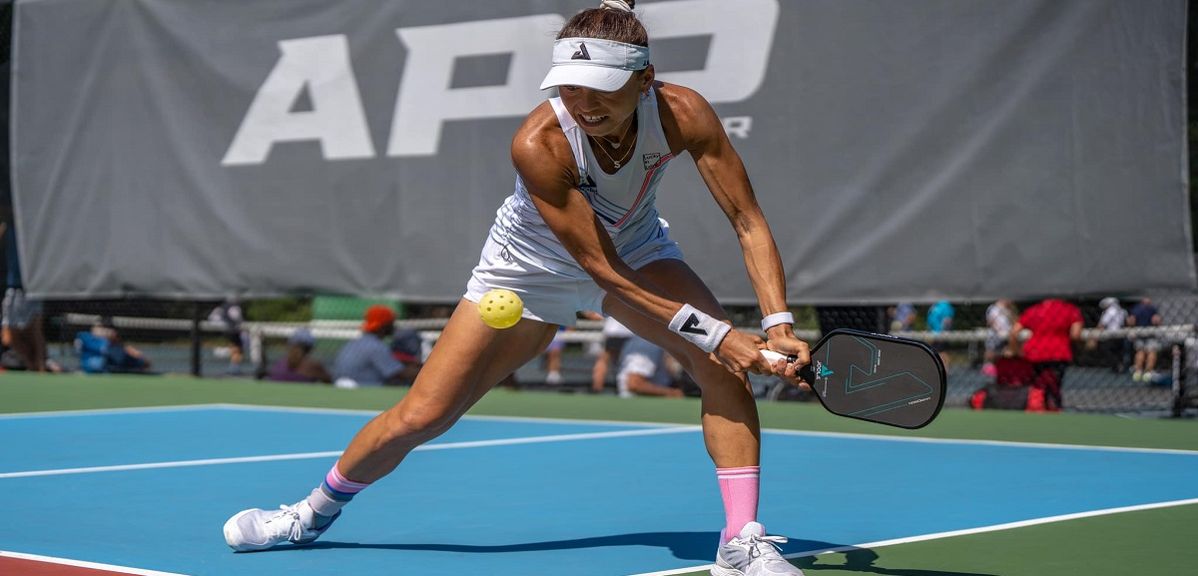
5 Tips to Improve Your Pickleball Backhand | Guide to All Backhand Shots
It's no secret most pickleball players prefer their forehand to their backhand.
We've received tons of questions asking us for help keeping backhand shots in bounds, so let's consider some backhand fundamentals.
We'll begin with the backhand grip...but before we do, let's clear up some misunderstandings about the legality of backhand serves.
You're allowed to backhand serve. Full stop. You just need to follow these rules that you'd employ for any legal serve (learn the ins and outs of backhand serves here).
Now, let's break down everything you need to know about the backhand.
Here's what we'll cover:
- How you should grip your paddle for backhand shots
- How to develop the two-handed backhand
- How to use the one-handed backhand counter
- How to stay consistent with backhand volleys
- How to perfect the backhand roll
1. Gripping Your Paddle for Backhand Shots
The "continental grip" is one of the most popular in the game. This is when the 'V' of your hand (between your thumb and index finger) is right on top of the paddle handle...similar to how a person might hold a hammer.
However, the prevalence of topspin at higher levels of pickleball have made the eastern grip more popular. That's when the palm is more parallel to the face of the paddle, adding strength through contact and a more natural topspin.
Between the two, a continental grip will provide more power on backhand shots.
But if you're natural inclination is to stick with the eastern grip, consider the benefits of a two-handed backhand (more on that below).
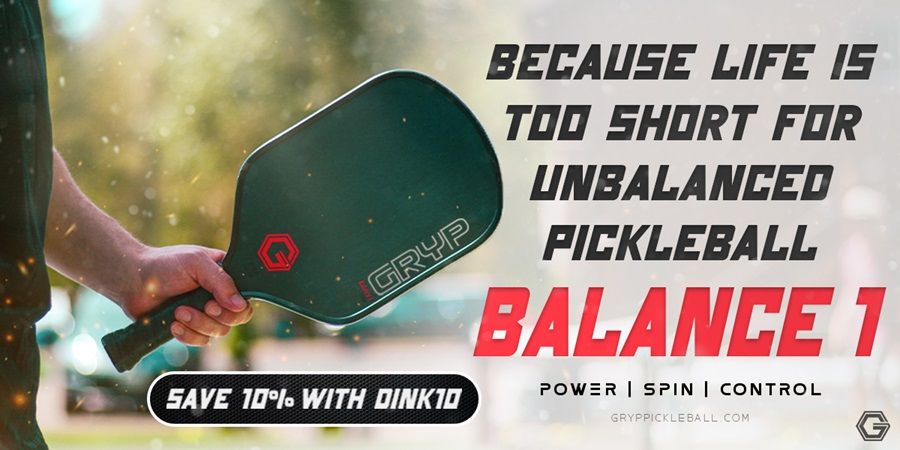
2. The Two-Handed Backhand
The two-handed backhand opens up a realm of possibilities that just don't exist when using one hand.
The second hand adds power, control, and makes hitting topspin easier. It does come with the drawback of less reach, but that's a small price to pay.
The most important aspect of the two-hander is that the second hand does most of the work. It should have a tighter grip on the paddle and control the paddle movement.
The dominant hand remains on the paddle for added stability and to prevent the need for changing hands.
Tyson McGuffin recommends a progression of drills using just the non-dominant hand to practice the stroke:
This helps build muscle memory and trust approach. The dominant hand can be added back on after consistency is established.
Now let's talk about when and how to use the two-hander effectively:
- The most obvious use is from the baseline. Switching to the two-hander adds power and the ability to use topspin. Two things that are vital for drives and passing shots.
- The second place you see the shot stand out is at the kitchen line. Players are adding a second hand to roll top spin dinks cross-court like never before.
Also, at the kitchen line, the two hander is paramount for the counterattack. It's difficult to always hit the sweet spot in a lighting-fast hands battle.
The two-hand approach adds stability to your grip to keep your counter headed in the right direction.
Add the second hand in these three situations and watch your consistency skyrocket.
3. One-Handed Pickleball Backhand
As far as James "Papa Jimmy" Ignatowich is concerned, he has the hardest backhand counter in the game.
In this video, Iggy recommends that players have both the one-handed counter and two-handed backhand counter at their disposal:
A one-handed backhand is ideal for a ball hit at your body. It allows you to quickly defend yourself and prevent taking one to the chest. The body mechanics even allow for decent power to be generated in this scenario.
When the ball travels outside of your offhand hip/shoulder, then it is ideal to add the second hand.
4. Backhand Volleys
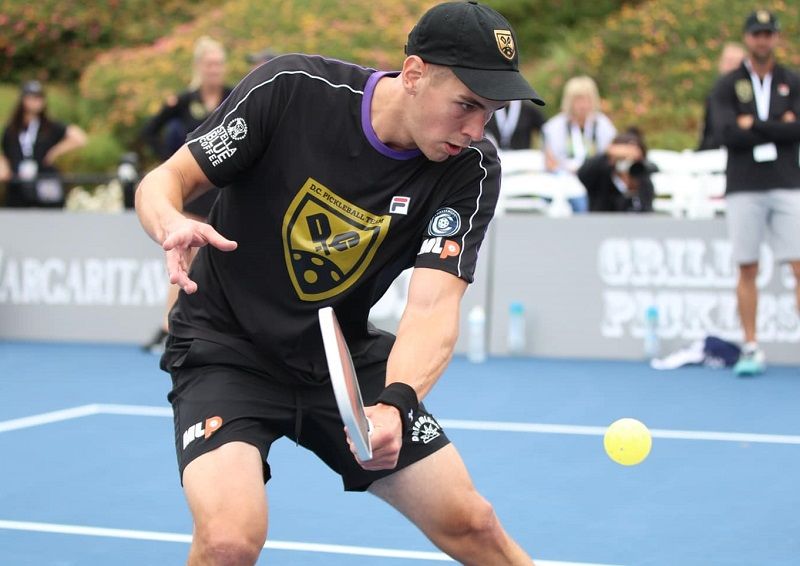
One of the biggest problems that arises with backhand volleys is paddle rotation. When the ball contacts the paddle outside of the sweet spot, it causes the paddle to rotate.
This means you think you're hitting a picture-perfect volley, but the ball actually pops up off the paddle or gets dumped into the net.
Related:
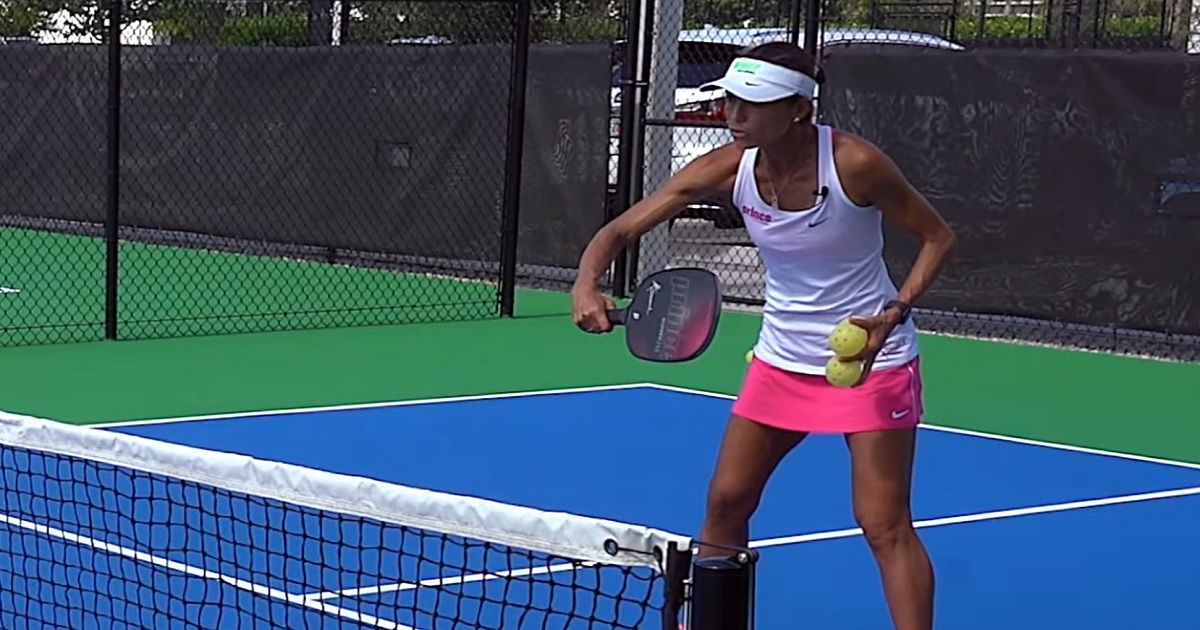
The forehand volley is a more natural motion than the backhand. It has the support of the pectoral or core muscles to absorb the impact.
The backhand has less support and requires more focus. It's vital to ensure the ball finds the sweet spot and that the paddle doesn't unintentionally rotate.
Limit the swing length to a simple punch volley to prevent the ball from spraying left and right.
If you find the sweet spot and limit your swing motion, you should be in good shape.
5. Backhand roll
The roll is most commonly seen as a volley. It is frequently used to keep opponents back as they attempt to transition forward or as a speedup technique at NVZ, but its applications are endless. Execute it correctly, and it can be deadly.
But what makes it so effective?
It helps to improve accuracy, particularly for backhand volleys. The increased RPMs allow for a more full swing and increased power, relative to a tennis punch-volley, which most players default to.
Extra spin prevents the ball from sailing long.
The swing path is visually confusing, making it difficult for opponents to react appropriately.
The paddle dips low (if you're like Ben Johns, it's completely inverted), the swing path is low-to-high and the ball's trajectory can be toward their feet, into their body, down-the-line or eventually, you can use the backswing for your lobs.

As a side note: it should be your goal use the same backswing to conceal your shots as much as possible. Johns stresses some key components when teaching the roll:
- Start with a low stance and paddle position. The swing path is low to high which is tough to do, if you don't start low. The paddle needs to be below the ball before contact.
- Limit wrist movement, your wrist is not the key to generating spin. More wrist movement = more errors.
- Swing at a 45° angle and brush up the back side of the ball to generate spin.
Read Next:





